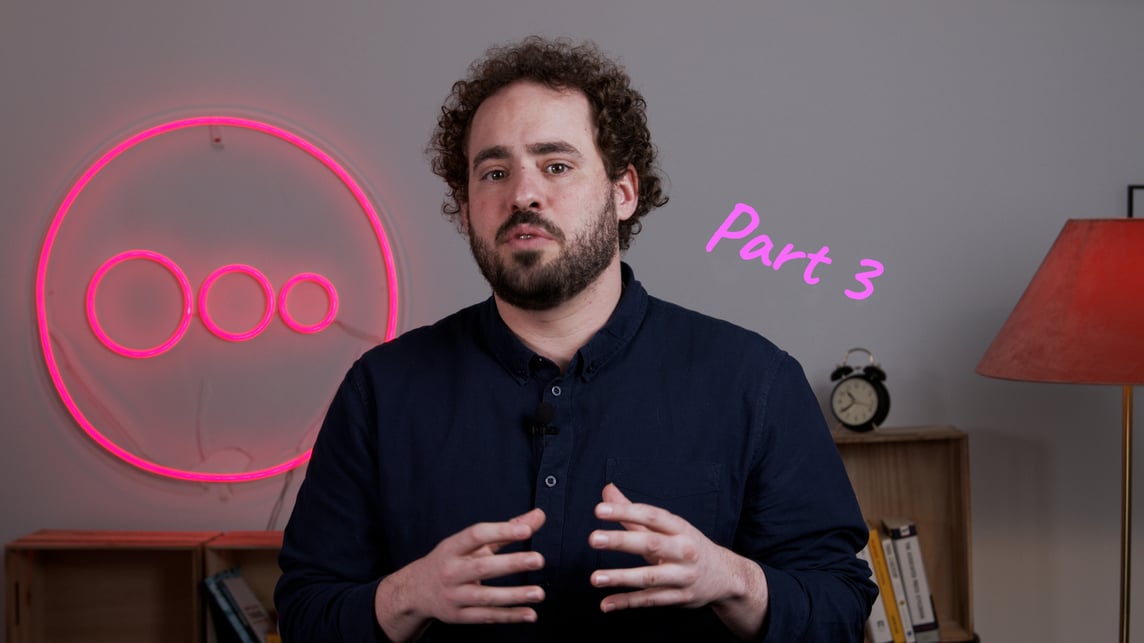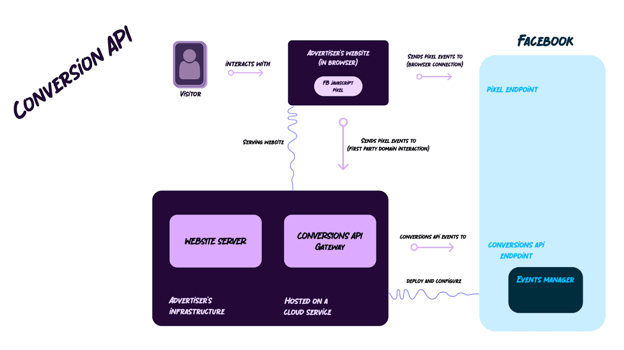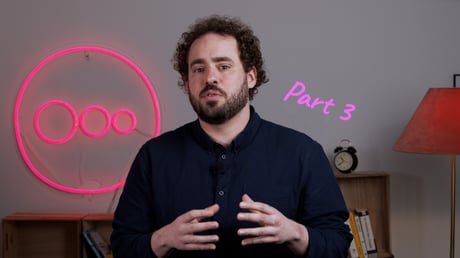-
 Written by Sean Dougherty
Written by Sean DoughertySenior Brand Creative at Funnel, Sean has more than 15 years of experience working in branding and advertising (both agency and client side). He's also a professional voice actor.

Teamwork makes the dreamwork — especially in the modern digital marketing industry.
Sure, the upheaval caused by automation and data loss may seem overbearing to any individual performance marketer, but we find strength in teams that are organized to deal with these systems.
As we see it, modern teams should organize themselves around three functional pillars:
Each pillar plays a critical role toward building the best possible relationship between humans and highly advanced machines causing much of the industry’s upheaval in the first place. Let’s break down each one to understand how to organize modern performance marketing teams.
1. Strategy and account management
Strategists ensure that the business’s goals are represented on each ad platform. If the business needs to improve return on ad spend, the strategist organizes the advertising activity and media mix to suit. This role is also most similar to what we have traditionally considered the job of a performance marketer to be.
Instead of focusing on small adjustments within each ad platform, marketers in the strategy and account management role will oversee cross-channel interactions and revenue.
What roles will strategists play?
Ad account management will be a part of their scope. Yes, even in the face of platform automation, good performance marketers still have a role to play. In fact, according to Frederick Valleys, there are three roles to play.
Doctor
Digital marketers will need to take on the role of a doctor to ensure that all ad accounts are healthy and performing as expected. When an account’s performance starts missing the intended goals (or becomes ill in this metaphor), it’s up to the marketer to diagnose, prescribe, and treat the account.
Pilot
Marketers will act much like commercial aviators. Once the plane (or ad platform) is up in the air, the autopilot takes over and does most of the work. However, a human is still needed for setting the destination, takeoff, landing, and navigating unexpected turbulence.
Teacher
Marketers will also act as teachers for the advanced algorithms. Machine learning is incredibly powerful, but those machines still need to receive a proper education. That means it’s up to the human digital marketers to ensure the machines are getting the right signals and data.
Cross-channel thinking
The future of performance marketing within the strategy pillar isn’t about playing dress up, though. You will also be required to solve attribution and incrementality.
That’s quite the ask. By looking at interactions across channels, performance marketers are uniquely suited to gain the best perspective on these long-elusive metrics. That also means you should be ready to perform lots of testing in order to find the perfect media mix for your organization.
2. Data and infrastructure
Forget the old real estate adage of “location, location, location.” The future of performance marketing is all about “data, data, data.” This requires building an infrastructure for data collection as well as interpreting and analyzing that data.
Building data infrastructure
While data loss, driven in part by stricter privacy rules, is making large-scale data collection more difficult, it is not impossible. The best performance marketers are already using techniques like server-side tagging and conversion APIs to track activity.
While these tools help marketers evade the impending “cookie-pocalypse,” they require a bit more technical knowhow.
In the past, cookies could be implemented with just a few lines of code. Now, conversion APIs require setting up your own server and coding events. The diagram below shows a rough configuration of how the system works.

While you could ask a developer to set it up, there are benefits to that knowledge living within your marketing team. It’ll be easier to test,iterate, and solve problems if anything breaks.
Analyzing all the data
Data is only useful if you can understand it. That means data analysis plays a huge role. And with increasingly complex data collection systems, analysis is sure to follow suit.
If your data collection apparatus omits a certain segment of the customer journey, you’ll need to employ complex mathematics and statistical modeling to fill in the holes, like marketing mix modeling.
MMM is a statistical model that shows how different marketing tactics contribute to your overall performance. It can also advise how changes in your spend affects your sales and revenue.
Predictive models and metrics are another way to take your analysis a step further. These models help companies quantify churn probability, purchase probability, predicted revenue, and more. Feed these predictive metrics back into ad platforms to give them even more insights to work from, further enhancing their performance. If they can anticipate how their next move will impact performance, they can adjust and become even more efficient.
3. The creative squad
Modern marketing is as much art as it is science. To create that art, your performance marketing team needs a creative squad, whose core responsibility is to make high-performing ads.
Despite algorithm-driven automation taking away many of the manual controls, creative remains a powerful lever.
In fact, a Nielsen study found that creativity is still king in the digital advertising world and is responsible for up to 56% of sales. The remaining 44% was driven by targeting, reach, brand, and everything else — combined.
Role reversal
In modern digital marketing, your creative can also do the targeting for you. Here’s how.
Imagine you are selling outerwear for greyhounds (they get cold easily after all) featuring your favorite anime cartoons.
In the old days, you would have to manually identify interests of online users like pet owners, greyhound lovers, DragonBall fans, and more. Once you combined all of these interests, the algorithms would then set out to find this incredibly niche audience segment.
However, due in part again to data loss, these audiences are becoming less effective. The platforms can’t access the reams of data that helped them to determine which greyhound lover in Minnesota was a huge Gundam fan.
Now, we instead create ads that are highly tailored to your audience, upload them to the platforms with the desired goals (conversions, sales, clicks, etc.), and let the machines sort out the rest. As part of its rapid and large-scale testing methods, it will hone in on your ideal audience based on interactions and conversions.
It may seem counterintuitive, but by making the algorithm start with a very broad audience, it can quickly narrow down to your ideal customer much more quickly and accurately than humans could in the past.
What about ad fatigue?
Once the platform has discovered someone in your hyper-specific niche, it will identify all of the users who “look like” that niche profile and deliver your ad creatives to them. If you’re not careful though, the audience can be fed the same ad over and over and over and over. With all this repetition, people start paying less attention. This is called ad fatigue. Your ad has less of an impact on your audience at a certain point, and becomes less and less effective over time.
To counteract ad fatigue, you’ll need to produce more ads, more often. And if you need to produce more ads, it's advantageous to have that creative production superpower within your team.
Setting yourself up for success
What do you get when you combine a pilot, a data analyst, and a creative? The start of an amazing performance marketing team!Despite all of the automation and data loss that digital marketers face, these three pillars of a powerful performance marketing team still thrive on human touch. They help inform, steer, and empower the machines with incredible creatives.
While it’s scary, it’s good that we delegate our manual processes to machines. It empowers us to focus on higher-leverage work. And that’s how we make the dreamwork.
Learn more: Future of performance marketing part 1 and part 2.
-
 Written by Sean Dougherty
Written by Sean DoughertySenior Brand Creative at Funnel, Sean has more than 15 years of experience working in branding and advertising (both agency and client side). He's also a professional voice actor.
